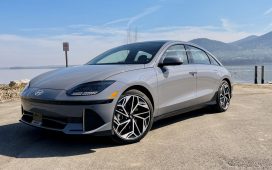Tesla was on the cusp of taking over electric vehicle charging in the US — then, the layoffs came.
Today, multiple outlets reported that the company has laid off hundreds of employees, just weeks after cutting 10 percent (approximately 14,000 people) of its global workforce. Tesla’s Supercharger division was said to be particularly hard hit, with several soon-to-be-former employees saying that close to the entire team had been cut.
According to The Information, Rebecca Tinucci, Tesla’s senior director of EV charging, is leaving the company, alongside most of the 500-person team she oversaw. Tinucci oversaw the effort to win near universal support from other automakers for Tesla’s North American Charging Standard (NACS), an enormous feat that earned her a spot on the “TIME100 Climate” list and MotorTrend’s “Power List,” as noted by Electrek.
Tesla’s Supercharger division was said to be particularly hard hit
Things started rolling in November 2022, when Tesla announced that it was opening up its EV charging plug and network to other automakers. The idea was to give the rest of the industry access to Tesla’s more reliable Supercharger stations at a time when EV charging is a dicey and precarious proposition — while also enabling the company to access billions of dollars in federal funding for future charging infrastructure.
Ford came first, then GM, and then everyone else. Most recently, two global automakers, Volkswagen Group and Stellantis, were the latest — and last — to say they would adopt Tesla’s charging standard for their future EVs.
Tesla’s decision to lay off nearly its entire Supercharger team at its moment of triumph could signal a shift in strategy. For example, Electrek also reported that the company was pulling out of four leases for new charging stations in the New York City area.
In a post on X, Tesla CEO Elon Musk said the company remains committed to EV charging, but installations would slow down as an immediate effect of the layoffs.
But those who were affected by today’s cuts said they were blindsided by the news.
“Wow, this is real. I can’t confirm 100% that the entire Tesla #TeslaCharging org has been laid off, but my team and I certainly have been,” William Navarro Jameson, strategic charging programs lead, wrote on his LinkedIn profile. “As I try to piece together anything more I will share what I can.”
Jameson later wrote on X that “@elonmusk has let our entire charging org go,” adding that the layoffs present “a unique opportunity for the industry to capitalize on the newly available talent and expertise in the space.”
“If Tesla is yielding the charging crown,” he added, “who will step up?”
George Bahadue, senior manager of site acquisition and business development for Tesla’s commercial charging program, also said on LinkedIn that he had been laid off. “To the Supercharger team, this is not the end, it is the start of a new chapter,” he wrote.
“If Tesla is yielding the charging crown, who will step up?”
Tesla’s Supercharger network is widely recognized as superior to many of the third-party EV charging stations, most of which feature CCS plugs and the less-utilized CHAdeMO charging standard. The company says it has 45,000 Superchargers worldwide, 12,000 of which are located in the US.
In its most recent earnings report, Tesla said it installed 6,249 Supercharger stations, which include 57,579 connectors, during the first three months of 2024. Station installations were up 26 percent year over year, while the number of connectors was up 27 percent. It was a rare area of growth for the company, which has seen its sales and profits fall since last year as demand for EVs cools down.
EV charging remains a sore point for the entire industry, with numerous surveys citing consumer anxiety about the state of charging in the US. With better, more reliable charging, many have theorized that EV adoption would improve significantly.
During that earnings call, Elon Musk paid short shrift to Tesla’s automotive business, preferring to aggressively tout the company’s newfound status as an AI venture and promote its efforts to produce a fully autonomous robotaxi. The future is bright, he insisted, because Tesla is going to “solve autonomy.”
The number of times EV charging or Tesla’s Superchargers came up during the one-hour call? Zero.












